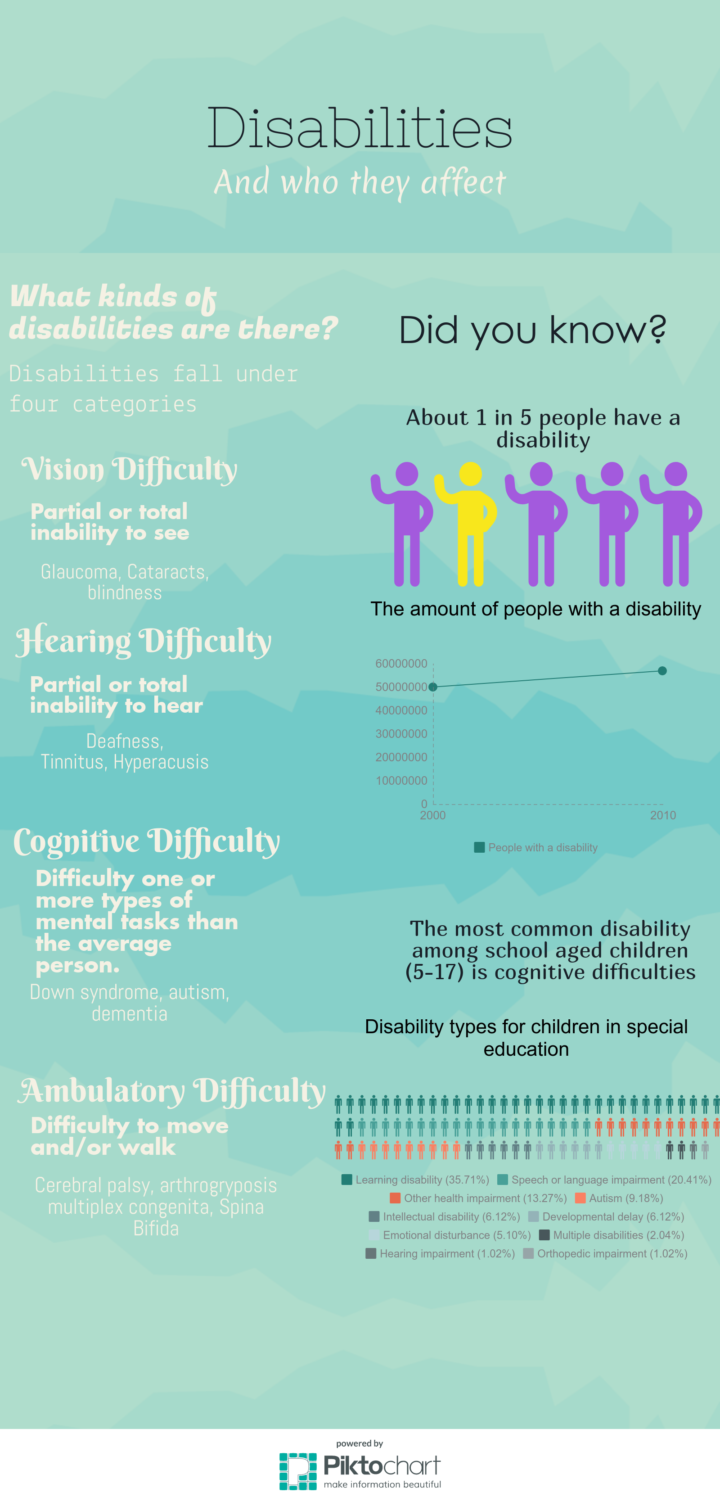Imagine your morning routine.
You wake up, get out of bed, eat breakfast, brush your teeth, and then you get in the car to go to school. Once you’re at school, you make your way to class and start your day.
Now, imagine doing that without using your legs.
Disabilities are more common than some may think. According to Census, 19 percent of the population in the US has some sort of disability— that is about 56.7 million people.
There are about 53.9 million school children aged five to 17 in the U.S.
Of those 53.9 million, about 2.8 million are disabled. Miles Bernstein, a senior, is one of those people.
Bernstein has a condition called arthrogryposis multiplex congenita, an ambulatory disability that is recognizable at birth but differs from person to person.
“In essence, I was born with all the joints in my extremities curved. Along with that, I am missing my hamstrings and my biceps. I use my quads and triceps to compensate for the lack of muscles,” Bernstein said.
Because of this, there are certain things that are difficult for him to do.
“It is hard for me when I have to walk for long distances; I have a limited range of motion, and motor skills are very difficult for me,” Bernstein said.
According to the Individuals with Disabilities Education Act, or IDEA, “Every state and local school district receiving federal funds to find and educate at public expense all handicapped children in its jurisdiction, regardless of the nature or severity of a child’s handicap.”
Essentially, any school receiving government funding must provide an equal education for handicapped children. Additionally, schools must accommodate their needs if necessary at no extra cost to the family.
This means that Bernstein and others similar to him have an equal chance at education as everyone else.
“Mobility is difficult for me. There is nothing wrong with me cognitively, so I think I can achieve anything anyone else can [in academics]. Especially considering accommodations have been made to make me able to perform at the same level or even higher than mainstream kids,” Bernstein said.
Bernstein’s teachers enjoy having him in class and have positive thoughts towards him.
“Miles is a great student, he participates well, does all his assignments, he’s friendly, and performs at a high level. He’s just like any other student,” said Mary Codianne, an Algebra 2 and Pre-Calculus teacher.
There are still problems unique to Carlmont though, as the campus is spread out and on a hill. This makes it hard for Bernstein to get from class to class on time.
“The campus is not easy to navigate due to the hill and the fact that the school was built a long time ago. The elevators are not always convenient and navigation through large crowds can be quite difficult,” Bernstein said. “However, when you seek out the right path from point A to point B, it’s not too bad.”
Since it takes him longer to get from place to place, it can get in the way of his classwork. However, some teachers regularly accommodate his needs.
“[For some classes] I have to travel long distances and that affects how much time I have to spend in that class. Another thing that helps is that some teachers also allow me to leave about five minutes early, to make sure I make it to my next class on time.”
Even though there are some setbacks, Bernstein still remains positive.
“Having things not go the way you plan prepares you to be an optimist, it helps to think positively,” Bernstein said.
Bernstein encourages a growth mindset and positive thinking, and his way of thinking helps him shine as a student.
”When I first came to Carlmont, even though I was handicapped, I wanted to show and give the attitude that I still want to be here and I still want to be successful. As long as you show teachers that you’re willing to work too, they will be more than happy to help you,” Bernstein said.
He also has some advice for anyone that is struggling with themselves or anything in their lives.
Bernstein said, “Don’t worry about what other people think. Everyone has their own insecurities. You have to find someone to love you the way you are. I know it took a long time for me to become comfortable with myself. But once you do, things will start looking up.”













